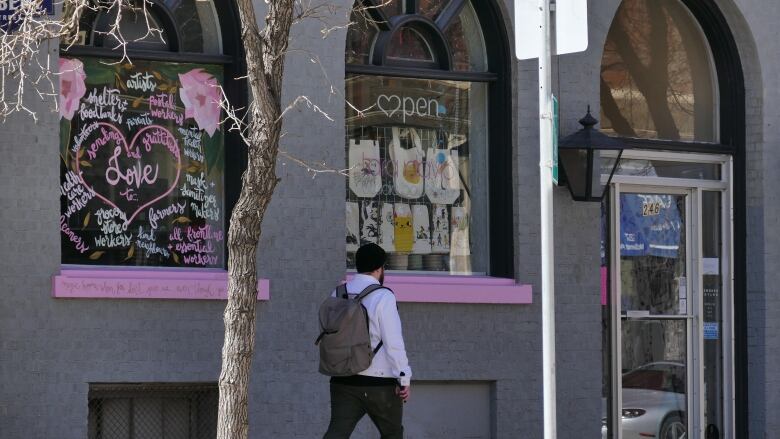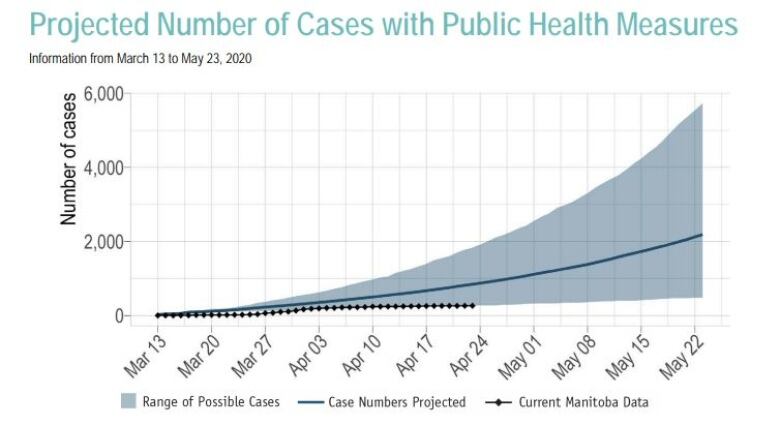Manitoba reopening plans could be pandemic 'trendsetter' across continent, infectious disease expert says
U of M prof says vigilant physical distancing and strictly adhering to relaxed rules still crucial here

An infectious disease expert says the continent will be watching how Manitoba's plans to reopen for business unfold as the province relaxes health orders during the COVID-19 pandemic.
Dr. Jason Kindrachuk, an assistant professor and Canada research chair in emerging viruses at the University of Manitoba, said he is "cautiously optimistic" about the strategy Premier Brian Pallister unveiled Wednesday to restart the economy.
"Manitoba without a doubt is in somewhat of a unique situation," he said.
Public health officials credit Manitobans for how seriously they took the idea of physical distancing when Pallister first declared the public health emergency on March 20. The province has maintained a minimal COVID-19 caseload and middle-of-the-pack testing capacity compared to its Canadian counterparts.
Kindrachuk said the province's distance from major cities gives it a geographical advantage.
"These factors, plus any number of other factors that will be identified over time, have resulted in us being able to keep cases low and flatten the curve faster," he said.
Now the province finds itself in an odd place.
"That also kind of makes us or puts us in the position of being somewhat of a trendsetter for not only for the country but for the rest of North America as we reopen," he said.
Be vigilant to minimize impact
Kindrachukhas faith in the province's top doctor, although he raised some concernsabout the scope of the plans and issues enforcing them.
The province is putting a lot of trust in Manitobans, he said, with spot inspections and personal accountability as the main measures to rely on for strictly adhering to restrictions put in place under the amended public health orders.
"We have to accept that our responsibility is still extremely high," Kindrachuk said, adding physical distancing is more important now than ever in order to continue on a trajectory that avoids a "massive spike" in new positive cases and contains the novel coronavirus.
"Or we don't do that."
If people slide in their vigilance, the spread will increase as campgrounds, beaches and other more public areas open, Kindrachuk said.
By the numbers
Manitoba's top doctor said Wednesday the province's models suggest there would be6,250 cases of COVID-19 in a year if current restrictions were not lifted.
Chief Provincial Public Health Officer Dr. Brent Roussin said in a daily COVID-19 briefing on Wednesday the province would have had 3 times as many cases as of April 25 without physical distancing measures in place. His estimates suggest Manitoba would have reached 933 cases, instead of the 273 identified as of Wednesday morning.
Roussin did not say how many new cases or COVID-19-related deaths the province expects with the loosened restrictions Pallister announced earlier Wednesday although he said the modelling reflects the data the province used to make its decision to start reopening.
He also cautioned that the projected numbers should not be taken at face value because the data can only give a general idea of what the situation might look like.

It is "quite sensible" to look at reopening in Manitoba given that the province is experiencing a relatively small caseload per capita, compared to provinces like Quebec and Ontario, said Daniel Coombs, amath professor at the University of British Columbia.
However, Coombs said the real infection rate in Manitoba could be more than threetimes higher than reported, based on the modelling,because people who do not feel symptoms and those experiencing mild ones may not have sought testing or were not eligible for testing.
Yet he said the projection shows a slow, steady increase over time, and although the model is imperfect, it suggests a decreased rate of positive tests and a low number of deaths, which is a good thing, Coombs said.
It will take two to three weeks before public health experts can see how well Manitoba's plan is workingdue to the delay in showing symptoms, he said.
Kindrachuk agreed there is not enough data for modelling to project the number of cases or deaths after reopening.
"The more data points you have, the more reliable the models become, and as you start to decrease that, what happens is you're going to start to get a lot of noise, and now things are a little bit more scattered in terms of their reliability," he said.
Increased testing and contact tracing will be needed if or when the number of cases goes up, he said.
With files from Caitlyn Gowriluk and Bartley Kives












_(720p).jpg)


 OFFICIAL HD MUSIC VIDEO.jpg)
.jpg)



























































































